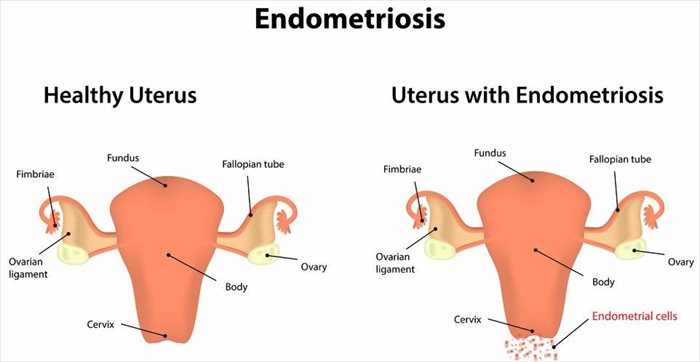
- Infertility
- Infertility in men - What causes fertility problems in men?
- Symptoms of infertility in men
- Diagnosis and treatment of infertility in men
- Infertility in women - What causes fertility problems in women?
- Symptoms of infertility in women
- How is infertility diagnosed and treated in women?
- Complications of fertility treatment in women
- Risk factors and outlook for infertility in men and women
Infertility in women is often due to age and the associated decline in the ovarian reserve.
The ovarian reserve refers to how many eggs a woman has left at any one point in time. Women are ultimately born with a set number of eggs and lose multiple eggs each month through ovulation and the menstruation. Therefore, a woman’s age although not an optimal predictor, can be used as an indicator of her ‘biological clock’.
Various other mechanisms may cause earlier depletion of a woman’s ovarian reserve, however, some remain unknown. Known causes of a reduction in the ovarian reserve include ovarian surgery, autoimmune disorders, treatment of cancers such as chemotherapy or radiation.
Women over 35 can often battle to fall pregnant due to declining numbers of viable eggs and falling pregnant after 45 is very rare.
There are a number of other causes, these being:
- Issues with ovulation – ovulation disorders can affect the ovaries, preventing them from releasing eggs. These often include hormonal disorders such as polycystic ovarian syndrome (PCOS), which occurs when the ovaries are unable to release an egg. Another condition that entails having too much prolactin (the hormone responsible for stimulating the milk production of the breasts), may also disrupt ovulation. The menstrual cycle can also be adversely affected by too much of the thyroid hormone, known as hyperthyroidism, or too little, known as hypothyroidism. Other issues known to disrupt ovulation are excessive exercise, injury, tumours and eating disorders.
- Endometriosis - this condition can cause irregularities in menstruation but often does not manifest any symptoms whatsoever. It is caused by endometrial tissue growth on the outside of the uterus, which can affect the function of the uterus, fallopian tubes and the ovaries. The tissue growing on the outside of the uterus is then trapped and cannot go anywhere, the uterine tissue inside the uterus is typically shed every month during the menstrual cycle, but the tissue that is trapped cannot be shed, therefore inflaming the surrounding body tissue, which can cause scar tissue to form inside the fallopian tubes. This scar tissue does not only form inside the fallopian tubes but also inside the abdomen and around the ovaries, distorting a woman’s natural anatomy.
The treatment of endometriosis of the ovary, namely the removal of an endometrioma, or removal of benign ovarian cysts, or an oophorectomy (removal of a whole ovary) will cause a reduction in the ovarian reserve (the way in which doctors describe how many eggs are left at any one point in time). - Fallopian tube blockage or damage – this is usually caused due to the fallopian tubes being inflamed, a condition known as salpingitis. This is often the result of pelvic inflammatory disease (PID) typically caused by an STI (sexually transmitted infection), endometriosis or adhesions.
- Cervical or uterine abnormalities – these abnormalities also include ones of the opening of the cervix, polyps inside the uterus or the actual shape of the uterus being abnormal. Benign tumours, being non-cancerous, forming in the uterine wall, are known as uterine fibroids and do not normally cause infertility through blocking the fallopian tubes, they are more likely to disrupt the fertilised egg, preventing it from being implanted.
- Premature ovarian insufficiency (POI) – is when the ovaries no longer work and menstruation stops before the age of 40. The exact cause of this is often unknown, however, there are certain factors associated with it, these can include genetic disorders (such as carriers of Fragile X syndrome or Turner syndrome), immune system diseases, smoking, radiation and chemotherapy.
- Early menopause - this is when menopause begins earlier than expected (between the ages of 48 and 52).
- Cancer and cancer treatments – female reproductive cancers are known to severely impact fertility as well as the treatments of radiation and chemotherapy.
- Pelvic adhesions – such as bands of scar tissue that can bind the organs after a pelvic infection, pelvic or abdominal surgery or appendicitis.
- Lifestyle factors – these include smoking and obesity which may play a role in the development of infertility.
- Other conditions – these include medical conditions that are associated with the absence of menstruation, known as amenorrhea or delayed puberty. Celiac disease, badly controlled diabetes and autoimmune diseases like lupus, can all affect a woman’s infertility as they result in the menstrual cycle being impacted. These can also include genetic abnormalities.

